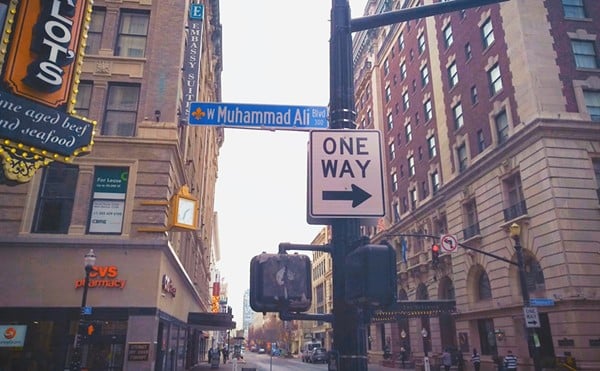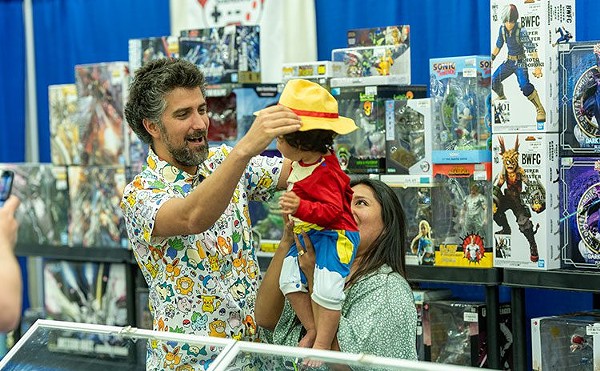Monsters of Food
Thanks to Mat Herron for his piece about the Food Literacy Project, the charity benefiting from the Monsters of Folk concert (LEO Weekly, Oct. 28). I would like to clarify the role that Ivor Chodkowski and his farm play in making FLP’s work possible. While we work in close proximity, Field Day Family Farm and the Food Literacy Project are distinct entities in practice and purpose. Field Day Farm exists as an eight-acre vegetable operation on the Oxmoor Farm property, and the Food Literacy Project, a nonprofit education agency, co-exists there serving local youth.
Chodkowski remains a full-time farmer, producing more than 20,000 pounds of fresh produce each season for local markets to support his family and the farm crew he employs. Rather than renaming his farm, he shares it with Louisville youth through the work of the Food Literacy Project. Thanks to him, FLP has a working farm — rather than a demonstration site — as its outdoor classroom, enabling us to bring the field-to-fork experience to life for local youth alongside farmers working the land. This co-existence is among FLP’s greatest strengths. Students participating in our experiential education program don’t just explore and taste vegetables growing in the ground, they also engage in the work of a family farm, and discover the critical role that production agriculture plays in creating a just, sustainable food economy.
Every bite of food we eat connects us to the earth and — just as importantly — to the people who work to feed us. FLP is grateful for the unique opportunity to teach respect and responsibility for sustaining these connections from the fields of Field Day Farm.
Carol Gundersen, executive director, Food Literacy Project
Ruffled Feathers
Thank you, Steve Shaw, for respectfully but pointedly reminding us who the players are in this tiresome struggle for transportation, aesthetics and livability (“Burned bridge,” LEO Weekly, Nov. 11).
On the right — a small, wealthy group of largely self-interested archetypes, desperately trying to retain prominence on their acreage. On the left — many, many more who traverse the river and want to live and work near and enjoy our shared waterfront without further blight. Hypocritically staring in the face of global facts and trends, River Fields asserts they have our interests in mind, saying another downtown bridge is the “only” solution to our problems. Meanwhile, they deride a bridge to be placed in their own backyard as improper. What’s good for the flock isn’t good for Mother Hen, it seems.
Levering another bridge into downtown’s cramped quarters while overlooking that there is no other passing upstream of our city until Madison — Madison?! — is quite clearly pure, selfish folly. The East End Bridge will disrupt some landscape, yes, but with a much more elegant solution, with far fewer citizens displaced and with much less overall environmental impact than a monumental urban interchange.
To be fair, I live near downtown and hope to continue to do so. But if we are sacked into further smothering our urban center with concrete and waste, I will no longer find Louisville fit to live in, the literal and political air too polluted to tolerate.
Jeff Blanchard, Old Louisville
Troubled Waters
Very good, very good indeed. Steve Shaw’s “Burned bridge” piece in the Nov. 11 LEO really lays it all out. However, put in a way that boils it right down to the nitty gritty, here is a letter I sent to The New York Times earlier this month:
“I cannot agree more with the sentiments of the ‘Cape Wind’ editorial on Nov. 2. We have the same situation — on a different issue (but conceptually the same) — going on down here in Louisville, Ky. For decades and to no avail, we have been trying to get a bridge (East End) built across the Ohio River to complete Interstate 265 — as designed to help alleviate downtown traffic congestion, but the only portion NOT built.
“For we, too, have a band of Indians who have successfully blocked its construction based on their religion. Dressed in their Gucci robes, Armani buckskins and Versace/Jimmy Choo moccasins, they continually dance and chant in our courthouse and newspapers their religious Gregorian prayer: NIMBY this year; NIMBY next year; NIMBY ever. They sure have powerful wampum, and a lot of it, too.”
This ain’t rocket science!
Joe Kopacz, Highlands
Whiskey Tripping
As I approached the LEO box, I thought the cartoon character on the cover of the Nov. 4 issue looked like Gary Stewart. I immediately dismissed that idea since Stewart is one of those tragic geniuses almost no one seems to remember. So I was beyond excited to find there really was an article about Gary Stewart. I enjoyed Jonathan Ashley’s travels in search of Stewart’s Kentucky origins and his efforts to remind the world of the powerful, timeless honky-tonk music Stewart left behind.
The photos on Stewart’s RCA Greatest Hits LP perfectly captured his two sides. On the front, a tight shot of a handsome guy with a confident half-smile. On the back, a man in the back of a limo, wearing huge dark glasses, a cowboy hat and a fur coat, clutching a briefcase to his chest (a briefcase certainly full of cash and cocaine) with a paranoid glance into the distance. I kept rooting for him to get it together, knowing full well it wasn’t going to happen.
While Ashley did a good job of explaining how Stewart’s many setbacks and addictions fueled his often sad but defiant music, it should be noted that Stewart had the ability to laugh at his “redneckness” and to turn moments of great triumph into disaster. His music wasn’t all crying in his beer stuff.
I hope the article inspires lovers of roots music, honky-tonk, country, blues or rock to track down Stewart for a little “Whiskey Trip.” He certainly deserves to be remembered alongside Kentucky’s best.
Dick Irby, formerly Old Louisville
Genius Abound
Regarding the art piece on artist Gregory Chaney (LEO Weekly, Nov. 4): Knowledge, from Homer to the inception of modernism, and through postmodernism and chaos to “The Ocean of Consciousness,” is reorganized, redefined through literature, art, music and film. The genres are changing and the canons are exploding, as is culture. The mythopoetics, the privileged sense of sight, of modern, avant-garde poets, musicians, artists and filmmakers are examples of a society, a culture, a civilization, a world in which humanity lives not securely in cities nor innocently in the country but on the apocalyptic simultaneous edge of a new realm and understanding. The mythopoet, female and male, returns to the role of prophet seer by creating myths that resonate in the minds and hearts of readers, myths that speak with the authority of the ancient myths, myths like Gregory Chaney’s “Revolutionary Theatre of the Divine Imagination,” that are gifts from the shadow.
Chaney’s epic “Revolutionary Theatre of the Divine Imagination” stands shoulder to shoulder with history’s greatest works of art: Homer, Dante, Michelangelo, da Vinci, Shakespeare, Blake, Picasso, Kahlo, Chaney. It will take at least a century for scholars to decipher, interpret and analyze Chaney’s masterpiece. The work will inspire for generations to come. I pray for those who are able provide safe harbor for the artist and his creation. Divinely inspired genius visits only on rare occasions. We must cherish this gift. I hope films and books document the art and the artist before he departs for other realms.
I am honored to know Gregory Chaney. I am uplifted and astonished by his nine-year channeled “Revolutionary Theatre of the Divine Imagination.”
Ron Whitehead, Beaver Dam, Ky.
Not a Possibility
For shame, what has happened to compassion in Possibility City? Have hard-hearted Bushies taken over when we were busy shopping? Or have the demons of Charles Dickens novels possessed the movers and shakers?
East Market developers took a page out of Cordish’s club contractors and got the homeless out of “their” territory to redevelop and make money. George Unseld must not go to Broadway often if he doesn’t want to see the homeless in “his” district.
In these economic times with 11.2 percent unemployment, everyone should remember that those women and children could very easily be your daughters, nieces and grandchildren on the street in the winter. Step up to the plate, Mayor Jerry, Metro United Way, bank presidents and wealthy people. Don’t let Louisville be like Communist Peking, which hid its poor during the Olympics.
If this is Possibility City, it’s Possibility City for everyone, or the brand is meaningless. A Possibility City is judged by how it takes care of its poor and homeless.
Mary Zimmer, Louisville
Bad Deals
In the Nov. 11 LEO Weekly, Phillip M. Bailey referred to “the Abramson administration’s relationship with the Cordish Cos.” and their “sweetheart loan.” What is that relationship exactly? Words like these imply that Metro government officials or employees received something personal in exchange for local government funds. For example — campaign contributions, kickbacks, jobs for their families and friends, junkets to exotic places, or something else.
Or maybe, Bailey just figures the loan was a bad business deal. Maybe Metro government officials or employees failed to do all their homework on the deal. If that’s the case, we might be concerned about poor business judgment, rather than unethical relationships. Whatever the case, the words we use ought to accurately describe what we suspect.
Tom Louderback, Highlands





